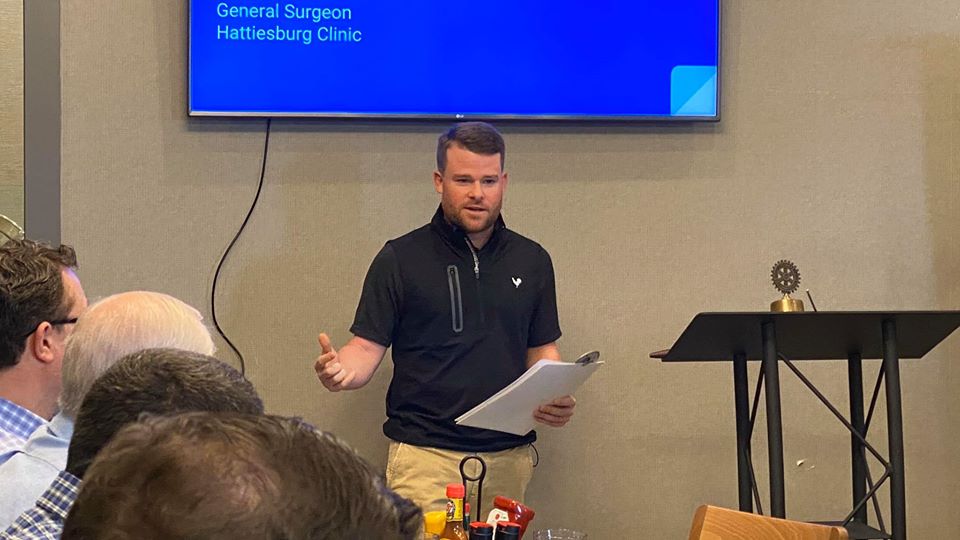
Rotary Club of Hattiesburg welcomed it's newest member, Will Sanderson.
President-Elect Mark Killingsworth presided over today’s meeting. Steve Ramp provided the invocation and Joe Meador led the club in the Pledge of Allegiance.
Mark thanked Coke for providing the trailer and the water for our Hub Fest event coming up on March 28. Volunteers are needed to work the event and a sign-up sheet will be available beginning next week.

"Thank you!" to our guest and program speaker, Dr. Daniel Smith.
Michael McPhail thanked those who helped with today’s meeting. He then introduced our guests. Rob Riley is a guest of Bob Riley.
Mark then installed William Sanderson, Jr. as the club’s newest member. Will is originally from Laurel. He now works as a real estate agent, specializing in land and commercial property. He is married and is looking forward to his tenure as a Rotarian.
Katie Anthony then introduced today’s guest speaker, Daniel Smith, MD, FACS. He is a general surgeon for Forrest General Hospital. He has been at Forrest General since 2014. His topic today is all about Robotic-Assisted Surgery.
The first robotic-assisted surgery device came on the market in 1985. It was the PUMA 560. In 1991 ProBot introduced an advanced model of the original. NASA and the Army became interested in robotic surgery in the mid-1980s. NASA actually had a robotic surgery machine on the space station. The Army saw the need for robot-assisted surgery units on the combat field. Rather than transporting wounded soldiers out of the combat zone, they were able to put the wounded soldier into an armor protected vehicle where the surgery could be performed immediately.
The FDA approved the first commercial telepresence machine in 1998. The machine featured computerized motion controls. In 1999 ZEUS introduced a machine that was used in a coronary bypass procedure and surgeons were able to perform the surgery without stopping the heart.
3D visualization technology was then introduced to the devices. Today the camera used in procedures is stable and is completely under the control of the surgeon. Today’s machines include scaled movements, advanced instruments, and better visualization techniques. They offer better outcomes and shorter hospital stays. Robotic-assisted surgery machines are now the standard of care in neurology.
Primary uses for the machine at Forrest General Hospital include hernia, colorectal and pancreatic surgeries. Forrest General currently has two US da Vinci robotic devices.
Many thanks to Dr. Smith for bringing the US da Vinci machine to today’s meeting and allowing Rotarians to try their hand at robotic-assisted surgery.
There being no further business to come before the club, Mark thanked today’s speaker and adjourned the meeting with your motto: “Service Above Self.”